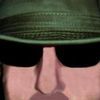Opinions
Jun 20, 2014 23:30:59 #
lighthouse
Loc: No Fixed Abode
wrightwrjr wrote:
I'll tell you one thing dude, I have already done my research on you, and I have a great 'ol big pile of PMs concerning how people on here feel about you. If I were you, I'd carry a ball bat everywhere I go. :cry:
How about you just deal with the photography issues that you seem to have trouble with.
Jun 21, 2014 13:13:47 #
elliott937 wrote:
As a teacher of the Physics of Light, Sound, and E... (show quote)
Thank you your unassailable presentation. I observe that photographers tend to gravitate toward one of two camps: artists and technicians. Artists strive for achievement, technicians obsess about methods. There is some common ground, of course, and either inclination serves as long as it remains enjoyable. :thumbup:
Jun 21, 2014 13:49:32 #
elliott937 wrote:
As a teacher of the Physics of Light, Sound, and E... (show quote)
:thumbup: as an audiophile I appreciate the comments. I used to have a DBR Dynamic Range Enhancer for my old LP records, then I started buying Telarc. I have the 1812 overture with period cannon by Cleveland Symphony, and love playing it at moderate levels. My ex-sister-in-law was majoring in mechanical engineering and came over one afternoon. I was playing the record and took the covers off the front of the speakers.. She got bopped in the nose by the subs and mids firing during the cannon fire.. lol. That experience, if nothing else made the cost of a good stereo worth it. And, as a photographer, I too, agree on dynamic rage / hdr in photos and in anything else that is to be real. HD TV for example.
If you want to reply, then register here. Registration is free and your account is created instantly, so you can post right away.

